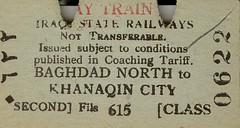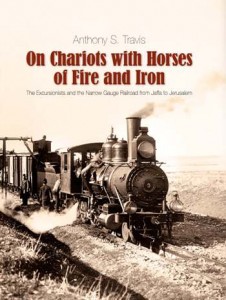Investment wanted for better links to neighbours:
Jordan plans railway, oil link with Iraq
AMMAN – Jordan is seeking six billion dollars from international donors to build a railway link with its neighbours and plans to import Iraqi crude oil by rail, the transport ministry said on Sunday.
The railway would link Jordan’s Red Sea port of Aqaba in the south with the Syrian border, through Amman and then the industrial city of Zarqa, the ministry said in a report carried by the official Petra news agency. Covering more than 1,000 km (600 miles), the railway would also link the Saudi and Iraqi borders with Jordan’s northern city of Irbid as well as the northeastern towns of Mafraq and Azraq.
The report recommended that Iraqi crude oil be carried via rail, scrapping plans to build a 260-million-dollar pipeline between the two countries.
“Lack of funds is the only problem facing the project, which should be completed by 2013, and any delay would increase the costs,” Petra quoted the report as saying.
Amman and Baghdad agreed last year to study the possibility of building an oil pipeline from Iraq’s Haditha pumping station to Aqaba.
At the end of 2004, Jordan said it would conduct a feasibility study into building a pipeline between Haditha and Jordan’s sole refinery in the industrial city of Zarqa, northeast of Amman.
The kingdom was entirely dependent on Iraq for its oil before the 2003 toppling of Saddam Hussein, importing 5.5 million tonnes a year by road, half of it free of charge and the rest at preferential rates.
In June, Iraq agreed to renew a 2006 deal to provide Jordan, which imports 95 percent of its energy needs, with between 10 and 30 percent of its daily oil requirements of around 100,000 barrels at a preferential price.
I can’t find the “report carried by the official Petra news agency”, at least not in English, but Petra also reports:
Government seeks funding for the implementation of railway project
Amman, July 26: The cost of establishing a railway project linking major cities and production centers in the Kingdom with neighboring countries hampers the establishment of this project expected to cost JD4.3 billion, according to specialized a study announced by the Transport Ministry.
The government hopes to get the necessary funds to complete the project by 2013.
The study noted that JD2.8 billion will be allocated for infrastructure, while JD1.4 billion will be allocated for purchasing rail fleet.
It highlighted the need to start the process of establishing the project as soon as possible as any delay will increase the investment cost and will not be feasible in economic terms.
Minister of Transport Ala’a Batayneh announced that the government started to expropriate lands located on the railways track which extends to 1080 kilometers at a total cost of JD350 million.
Earlier, the cabinet, which examined results of the study, decided to form a ministerial steering committee led by the transport minister to follow up on the implementation of the project.
Batayneh said in a specialized workshop that was held to familiarize concerned official and private bodies on the project, that His Majesty King Abdullah directed the government to secure the necessary funding for the project which will enhance Jordan’s role in transport and transit operations.
Jordan was among 13 Arab countries that approved during meetings of ESCWA in Beirut a railway linkage agreement which gave those countries a period of 10-15 years to implement their internal railway.



![[An ex-British Railways mark One coach in Bahrain]](/images/rail/bh-mki-coach1-small.jpg)
![[An ex-British Railways mark One coach in Bahrain]](/images/rail/bh-mki-coach2-small.jpg)
